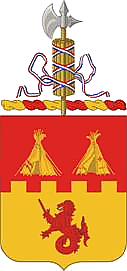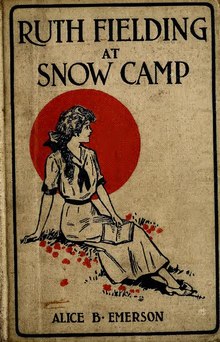
Mildred Augustine Wirt Benson was an American journalist and writer of children's books. She wrote some of the earliest Nancy Drew mysteries and created the detective's adventurous personality. Benson wrote under the Stratemeyer Syndicate pen name, Carolyn Keene, from 1929 to 1947 and contributed to 23 of the first 30 Nancy Drew mysteries, which were bestsellers.
The Stratemeyer Syndicate was a publishing company that produced a number of mystery book series for children, including Nancy Drew, The Hardy Boys, the various Tom Swift series, the Bobbsey Twins, the Rover Boys, and others. They published and contracted the many pseudonymous authors doing the writing of the series from 1899 through 1987, when the syndicate partners sold the company to Simon & Schuster.

Badi' al-Zamān al-Hamadāni or al-Hamadhāni was a medieval Arab man of letters born in Hamadan, Iran. He is best known for his work the Maqamat Badi' az-Zaman al-Hamadhani, a collection of 52 episodic stories of a rogue, Abu al-Fath al-Iskandari, as recounted by a narrator, 'Isa b. Hisham. His Arabic name translates into "The Wonder of the Age".

Elizabeth Lewisohn Eisenstein was an American historian of the French Revolution and early 19th-century France. She is well known for her work on the history of early printing, writing on the transition in media between the era of 'manuscript culture' and that of 'print culture', as well as the role of the printing press in effecting broad cultural change in Western civilization.

Edward Keble Chatterton was a prolific writer who published around a hundred books, pamphlets and magazine series, mainly on maritime and naval themes.

Thomas Hardy's Wessex is the fictional literary landscape created by the English author Thomas Hardy as the setting for his major novels, located in the south and southwest of England. Hardy named the area "Wessex" after the medieval Anglo-Saxon kingdom that existed in this part of that country prior to the unification of England by Æthelstan. Although the places that appear in his novels actually exist, in many cases he gave the place a fictional name. For example, Hardy's home town of Dorchester is called Casterbridge in his books, notably in The Mayor of Casterbridge. In an 1895 preface to the 1874 novel Far From the Madding Crowd he described Wessex as "a merely realistic dream country".

The thalamic fasciculus is a component of the subthalamus. It is synonymous with field H1 of Forel. Nerve fibres form a tract containing cerebellothalamic (crossed) and pallidothalamic (uncrossed) fibres, that is insinuated between the thalamus and the zona incerta.
Alice B. Emerson is a pseudonym used by the Stratemeyer Syndicate for the Betty Gordon and Ruth Fielding series of children's novels. The writers taking up the pen of Alice B. Emerson are not all known. However, books 1-19 of the Ruth Fielding series were written by W. Bert Foster; books 20-22 were written by Elizabeth M. Duffield Ward, and books 23-30 were written by Mildred Benson.

Lilian C. Garis , born Lilian C. McNamara was an American author who wrote hundreds of books of juvenile fiction between around 1915 and the early 1940s. Prior to this, she was the first female reporter for the Newark Evening News in New Jersey. Garis and her husband, Howard R. Garis, were possibly the most prolific children's authors of the early 20th century.
The Nancy Drew Mystery Stories is the long-running "main" series of the Nancy Drew franchise, which was published under the pseudonym Carolyn Keene. There are 175 novels — plus 34 revised stories — that were published between 1930 and 2003 under the banner; Grosset & Dunlap published the first 56, and 34 revised stories, while Simon & Schuster published the series beginning with volume 57.
Clara Antoinette McCarty Wilt (1858–1929) was the first graduate of the University of Washington and the first woman superintendent of the Pierce County School District.
The Betty Gordon books were an early Stratemeyer Syndicate series, published under the pseudonym Alice B. Emerson.

The 157th Field Artillery Regiment (First Colorado) is a United States Army Regimental System field artillery parent regiment of the United States Army National Guard, represented in the Colorado Army National Guard by the 3rd Battalion, 157th Field Artillery Regiment, part of the 169th Field Artillery Brigade at Colorado Springs.

Payne Jennings Jr., a World War II and Korean War veteran, probably best known for his involvement with the 1947 Roswell incident, was a highly decorated United States Air Force officer.
Rosa 'Jeanie Deans' is a scarlet-crimson hybrid rubiginosa rose cultivar created by Sir James Plaisted Wilde, who became Lord Penzance, in 1869. It is named after Jeanie Deans, the heroine of Scott's novel The Heart of Midlothian.
Evelyn's Sharp's short story "The Wonderful Toymaker" is part of a collection of fairy tales in the book, All the Way to Fairyland: Fairy Stories. The Cambridge University Press originally published the anthology in 1897. An EBook version was made available through The Project Gutenberg on 3 November 2009.

Morning Star is a historical novel with fantasy elements by H Rider Haggard, set in Ancient Egypt.

Brigadier-General Henry Tempest Hicks was a British Army officer who served in the South African War and was mentioned in despatches three times and subsequently made a Companion of the Order of the Bath. He later served in Aden.
William Nash was a grocer and politician in 18th century London.











